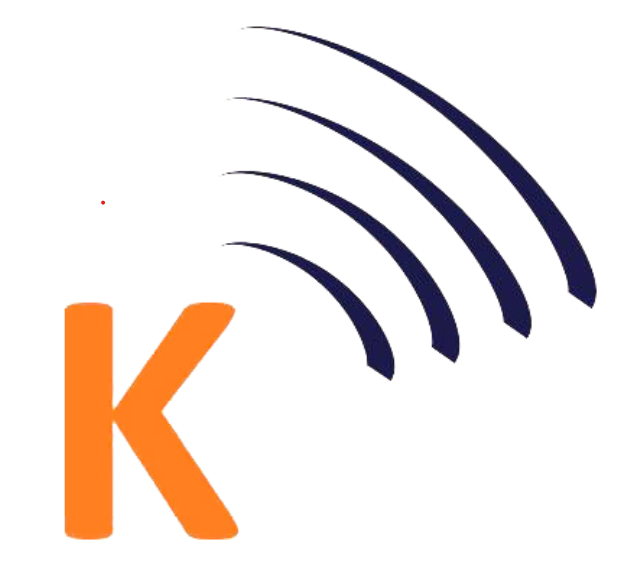Detection and analysis of the factors that influence human de-velopment and workability of workers
DOI:
https://doi.org/10.5965/2316419011202022046Keywords:
employment, Covid-19, workability, job, factor analysis, human development, Coronavirus, employer-employee relationship, workAbstract
With the complications caused by the worsening of the pandemic caused by the coronavirus, which started in 2020, where several sectors had their activities interrupted or even paralyzed, several employees had their working hours reduced or interrupted, forcing them to find alternatives to reposition themselves in the workplace. labor market. In this context, the term workability can be mentioned, which, according to Maltby (2011), aims to improve the quality of work, encouraging better mental and bodily health, relating the work environment with the personal environment. The main objective of this study was to identify and analyze factors that influence human development and workers' workability. After multivariate analysis, using the SPSS software, it was possible to identify two main factors that correspond to the presented study. The first factor identifies characteristics linked to the personal development of workers, while the second factor refers to questions about suitability and job satisfaction as determining factors in the professional development of workers. The importance of satisfaction as a criterion for professional improvement was also observed. This research also contributes to a better interpretation of the relationship between employer and employee, in addition to enabling different perspectives on the appreciation of technical and interpersonal skills such as improvement in the work process, professional appreciation and capture of new technical and emotional skills to better perform the work. and generate value through these.
Downloads
References
Baldin, N., & Munhoz, E. M. B. (2011). SNOWBALL (BOLA DE NEVE): UMA TÉCNICA METODOLÓGICA PARA PESQUISA EM EDUCAÇÃO AMBIENTAL COMUNITÁRIA. X CONGRESSO NACIONAL DE EDUCAÇÃO – EDUCERE. https://educere.bruc.com.br/CD2011/pdf/4398_2342.pdf
Belinski, R., & Martins, J. (2020). Interface gestão do conhecimento e aprendizagem organizacional. P2P & Inovação. http://revista.ibict.br/p2p/article/view/5095/4590
Brito, M. Y., Ziviani, F., Oliveira, J. L. R. d., & Christino, J. M. M. (2013). Estudo sobre a importância da Capacitação do servidor Administrativo do Hospital das Clínicas da Universidade Federal de Goiás. Revista de Administração Hospitalar e Inovação em Saúde, 10(2). https://revistas.face.ufmg.br/index.php/rahis/article/view/2084
Bulhões, D. M., Vasconcelos, & A. B., &. L. (2016). TRABALHABILIDADE: O CAMINHO PARA O EMPREENDEDORISMO. International Journal of Professional Business Review, 30-39. https://dialnet.unirioja.es/descarga/articulo/6806359.pdf
Cappellari, N., Stefano, S. R., Raifur, L., & Gonçalves, D. (2016). A LIDERANÇA E A GESTÃO ESTRATÉGICA DE PESSOAS NAS INSTITUIÇÕES FINANCEIRAS. Revista Brasileira de Contabilidade e Gestão, 14-27. https://www.revistas.udesc.br/index.php/reavi/article/view/2316419004062015014
Das Gecim, G. Y., Esin, M. N. (2021). A self‐management programme for work ability and quality of life in nurses aged 45 years and over: A randomized controlled trial. International Journal of Nursing Practice. doi:10.1111/ijn.12963
Fritsch, R., & Vitelli, R. F. (2016). EVASÃO ESCOLAR, A ESCOLA E O MERCADO DE TRABALHO: O QUE DIZEM JOVENS DO ENSINO MÉDIO DE ESCOLAS PÚBLICAS. Revista Cientifica Regional da ANPED. http://www.anpedsul2016.ufpr.br/portal/wp-content/uploads/2015/11/Eixo-2_ROSANGELA-FRITSCH-RICARDO-FERREIRA-VITELLI.pdf
Garthe, N., Hasselhorn, H. M. (2021). The relationship between voluntary employer change and work ability among older workers: investigating the honeymoon-hangover effect. Journal for Labour Market Research,. doi:10.1186/s12651-021-00294-0
Gonzales, R. V. D., & Martins, M. F. (2015). Competências habilitadoras da melhoria contínua: Estudo de casos em empresas do setor automobilístico e de bens de capital. Gest. Prod. São Car-los, 22(4). https://www.scielo.br/j/gp/a/N87KqtkRdmjcy4zmFjQGmQS/?lang=pt
Kobayashi, M., Kako, J., Kajiwara, K., & Ogata, A. (2021). The effects of curative-intent cancer therapy on employment, work ability, and work limitations. National Library of Medicine. https://pubmed.ncbi.nlm.nih.gov/34143435/
Hair, J. F., Black, W. C., Babin, B. J., Anderson, R., & Tatham, R. L. (2009). ANÁLISE MULTIVARIADA DE DADOS. Bookman.
IBGE. (30 de mar de 2020). Desemprego chega a 13,8% no trimestre encerrado em julho, maior taxa desde 2012. Agência IBGE Notícias: https://agenciadenoticias.ibge.gov.br/agencia-noticias/2012-agencia-de-noticias/noticias/29000-desemprego-chega-a-13-8-no-trimestre-encerrado-em-julho-maior-taxa-desde-2012
IBGE. (31 de mar de 2021). PNAD Contínua: taxa de desocupação é de 14,2% e taxa de subutilização é de 29,0% no trimestre encerrado em janeiro de 2021. Agência IBGE Notícias: https://agenciadenoticias.ibge.gov.br/agencia-sala-de-imprensa/2013-agencia-de-noticias/releases/30391-pnad-continua-taxa-de-desocupacao-e-de-14-2-e-taxa-de-subutilizacao-e-de-29-0-no-trimestre-encerrado-em-janeiro-de-2021
IBGE. (12 de mai de 2021). Setor de serviços cai 4% em março e volta a ficar abaixo do patamar pré-pandemia. Agência IBGE Notícias: https://agenciadenoticias.ibge.gov.br/agencia-noticias/2012-agencia-de-noticias/noticias/30716-setor-de-servicos-cai-4-em-marco-e-volta-a-ficar-abaixo-do-patamar-pre-pandemia
Ilmarinen, J. (2009). Work ability: A comprehensive concept for occupational health research and prevention. Scandinavian Journal of Work Environment & Health.
Ilmarinen, J. (2019). From Work Ability Research to Implementation. International Journal of Environmental Research and Public Health https://www.ncbi.nlm.nih.gov/pmc/articles/PMC6720430/pdf/ijerph-16-02882.pdf
International Labour Organization. (2020). ILO Monitor: COVID-19 and the world of work. https://www.ilo.org/wcmsp5/groups/public/---dgreports/---dcomm/documents/briefingnote/wcms_743146.pdf
International Labour Organization. (2020). International Labour Organization Monitor: COVID-19 and the world of work. Sixth edition. https://www.ilo.org/wcmsp5/groups/public/---dgreports/---dcomm/documents/briefingnote/wcms_755910.pdf
Maltby, T. (2011). Extending Working Lives? Employability, Work Ability and Better Quality Working Lives. Social Policy and Society. http://journals.cambridge.org/abstract_S1474746411000030
Maranhão, J. M. (2018). A IMPORTÂNCIA DA IMAGEM PESSOAL PARA DIFERENCIAÇÃO DO EMPREENDEDOR CRIATIVO NO MERCADO DE TRABALHO. Rev. Belas Artes, 2-20. https://www.belasartes.br/revistabelasartes/downloads/artigos/27/a-importancia-da-imagem-pessoal-para-diferenciacao.pdf
Martinez, M. C. (2016). Testando o Modelo da Casa da Capacidade para o Trabalho entre profissionais do setor hospitalar. REV BRAS EPIDEMIOL. https://www.scielo.br/scielo.php?script=sci_arttext&pid=S1415-790X2016000200403
Menezes, A. H., Duarte, F. R., Carvalho, L. O., & & Souza, T. E. (2019). METODOLOGIA CIENTÍFICA TEORIA E APLICAÇÃO NA EDUCAÇÃO A DISTÂNCIA. Fundação Universidade Federal do Vale. https://portais.univasf.edu.br/noticias/univasf-publica-livro-digital-sobre-metodologia-cientifica-voltada-para-educacao-a-distancia/livro-de-metodologia-cientifica.pdf/view
Neto, L. L. P., & Almeida, L. S. (2022). STUDANTES ADULTOS NO ENSINO SUPERIOR: STUDO NO IFAL-MACEIÓ TOMANDO AS EXPECTATIVAS E DIFICULDADES DO REGRESSO À VIDA ACADÊMICA. Revista AMAzônica, https://www.periodicos.ufam.edu.br/index.php/amazonica/article/view/8315/5927
Oakman, J., Neupane, S., Proper, K. I., Kinsman, N., & Nygârd, C. H. (2018). Workplace interventions to improve work ability: a systematic review and metaanalysis of their efectiveness. Scand. J. Work Environ. Health, 44(2), 134-146. https://doi.org/10.5271/sjweh.3685
Oliveira, A. C., Lucas, T. C., & Iquiapaza, R. A. (2020). O QUE A PANDEMIA DA COVID-19 TEM NOS ENSINADO SOBRE ADOÇÃO DE MEDIDAS DE PRECAUÇÃO? Texto & Contexto Enfermagem, 1-15. https://www.scielo.br/pdf/tce/v29/pt_1980-265X-tce-29-e20200106.pdf
Ramos, P. A., Gonçalves, H. S., Oliveira, A. B. B. d., & Nóbrega, S. G. d. S. (2021). A TRABALHABILIDADE EM ÉPOCA DE PANDEMIA: SEUS FATORES E AS IMPLICAÇÕES DA COVID-19 NO TRABALHO. Revista Brasileira de Contabilidade e Gestão, 10(16), 18-33. https://periodicos.udesc.br/index.php/reavi/article/view/19989/13279
Rashid, M., Heiden, M., Nilsson, A., & Kristofferzon, M. (2021). Do work ability and life satisfaction matter for return to work? Predictive ability of the work ability index and life satisfaction questionnaire among women with long-term musculoskeletal pain. BMC Public Health 21. https://doi.org/10.1186/s12889-021-10510-8
Santos, N. C. d., Souza, E. F. B. d., & Estender, J. S. d. (2022). Empreendedorismo, Responsabilidade Social e Negócios de Impacto. XII SEGeT.
https://www.aedb.br/seget/arquivos/artigos15/27522308.pdf.
SEMESP. (2020). Empregabilidade e Ensino Superior em Tempo de Pandemia. https://www.semesp.org.br/wp-content/uploads/2020/04/estudo-empregabilidade-pandemia.pdf
Skovlund, S. V., Bláfoss, R., Sundstrup, E., & Andersen, L. L. (2020). ssociation between physical work demands and work ability in workers with musculoskeletal pain: cross-sectional study. Journal of Health, Population and Nutrition, 2-8. https://doi.org/0.1186/s12891-020-03191-8
Sousa, N. F. d. S., Lima, M. G., Cesar, C. L. G., & Barros, M. B. d. A. (2018). Envelhecimento ativo: prevalência e diferenças de gênero e idade em estudo de base populacional. Cadernos de Saúde Pública. https://www.scielo.br/j/csp/a/CgHpmyrd4pDy3yq5dMLmLbs/?format=pdf&lang=p
Teixeira, M., & Borsari, P. (2020). Mercado de trabalho no contexto da pandemia: a situação do Brasil até abril de 2020. REMIR Trabalho. https://www.eco.unicamp.br/remir/images/Artigos_2020/Marilane_e_-Pietro__Mercado_de_trabalho_1o_quadrimestre_2020_vf2.pdf
Truxillo, D. M., Cadiz, D. M., & Brady, G. M. (2020). COVID-19 and its Implications for Research on Work Ability. Work, Aging and Retirement. doi:10.1093/workar/waaa016
Weber, L., & Grisci, C. L. (2010). Equipe, grupo ou... o quê?: possibilidades relativas ao coletivo no trabalho imateria. Encontro da ANPAD. http://www.anpad.org.br/admin/pdf/gpr1934.pdf
Werneck, G. L., & Carvalho, M. S. (2020). A pandemia de COVID-19 no Brasil: crônica de uma crise sanitária. CSP - Caderno e Saúde Pública, 1-4. https://www.scielo.br/pdf/csp/v36n5/1678-4464-csp-36-05-e00068820.pdf
WHO. (2020). WHO Director-General's opening remarks at the media briefing on COVID-19 - 11 March 2020. World Health Organization: https://www.who.int/director-general/speeches/detail/who-director-general-s-opening-remarks-at-the-media-briefing-on-covid-19---11-march-2020
Downloads
Published
How to Cite
Issue
Section
License
Copyright (c) 2022 Felipe Araujo Pereira, Pamela Adelino Ramos

This work is licensed under a Creative Commons Attribution 4.0 International License.
Brazilian Journal of Accounting and Management offers free and immediate access to its content, following the principle that providing scientifical knowledge in a free manner promotes a better world democratization of knowledge. Authors maintain copyright of articles and grant to the journal the rights of the first publication, according to the Creative Commons Attribution licensing criteria, which allows the work to be shared with initial publication and authorship recognition. These licenses allow others to distribute, remix, adapt, or create derived work, even if it is for commercial purposes, provided that the credit is given to the original creation.




















